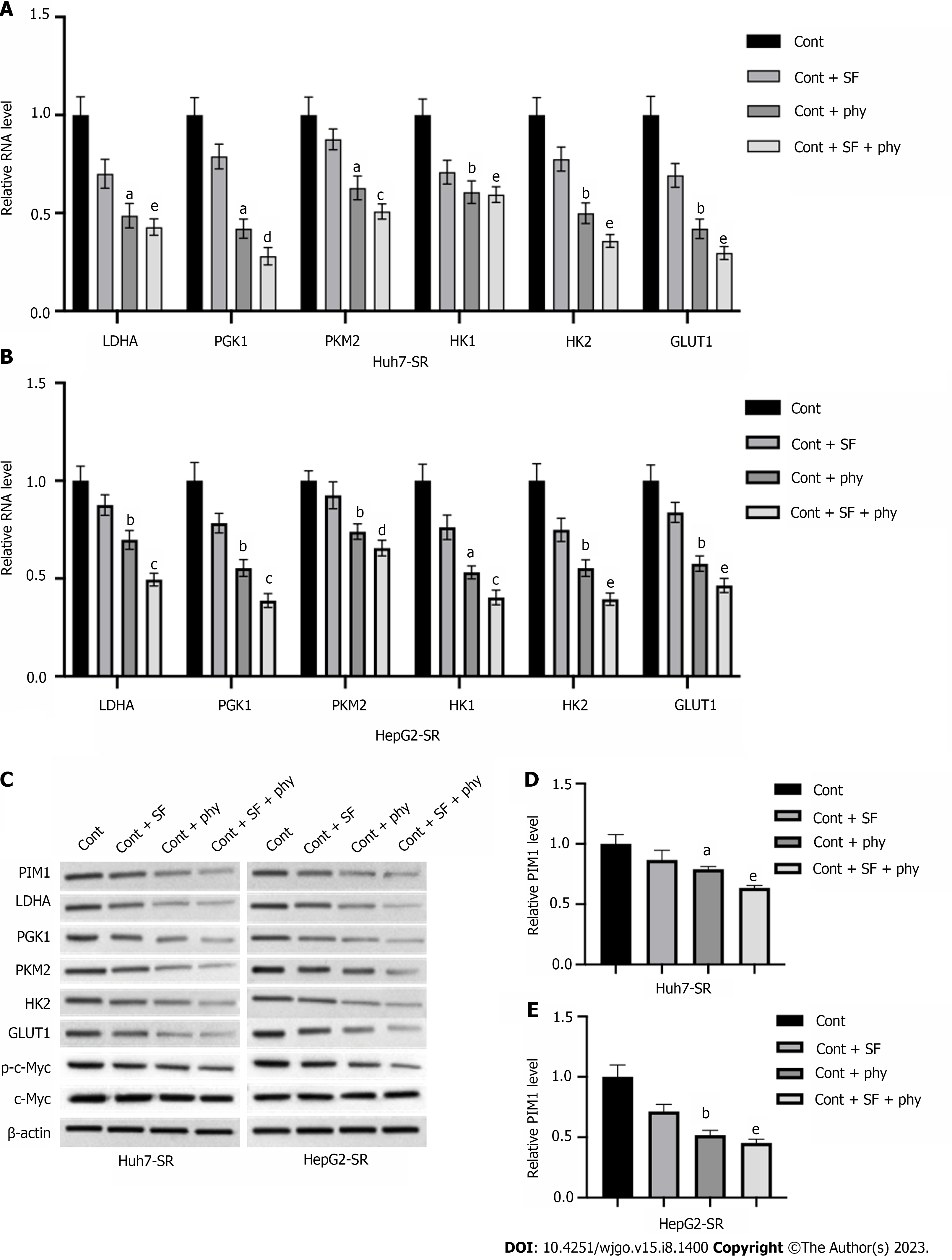Copyright
©The Author(s) 2023.
World J Gastrointest Oncol. Aug 15, 2023; 15(8): 1400-1411
Published online Aug 15, 2023. doi: 10.4251/wjgo.v15.i8.1400
Published online Aug 15, 2023. doi: 10.4251/wjgo.v15.i8.1400
Figure 4 Physcion regulates hepatocellular carcinoma cell glycolysis via targeting PIM1.
The sorafenib-resistant Huh7-SR and HepG2-SR cells were treated with physcion and/or sorafenib. A and B: RNA levels of LDHA, PGK1, PKM2, HK1, HK2, and GLUT1 in (A) Huh7-SR and (B) HepG2-SR cells were measured by quantitative real-time polymerase chain reaction (qPCR) assay; C: The protein levels of PIM1, LDHA, PGK1, PKM2, HK1, HK2, GLUT1, c-Myc, and phosphorylated c-Myc in cells were measured by qPCR assay; D and E: The RNA level of PIM1 in (D) Huh7-SR and (E) HepG2-SR cells were measured by qPCR assay. aP < 0.01, bP < 0.001 versus control (Cont) group; cP < 0.05, dP < 0.01, eP < 0.001 versus Cont + SF group. qPCR: Quantitative polymerase chain reaction; Cont: Control; SF: Sorafenib; phy: Physcion.
- Citation: Pan XP, Jiya BR, Wang F, Lan Z. Physcion increases the sensitivity of hepatocellular carcinoma to sorafenib through miRNA-370/PIM1 axis-regulated glycolysis. World J Gastrointest Oncol 2023; 15(8): 1400-1411
- URL: https://www.wjgnet.com/1948-5204/full/v15/i8/1400.htm
- DOI: https://dx.doi.org/10.4251/wjgo.v15.i8.1400









